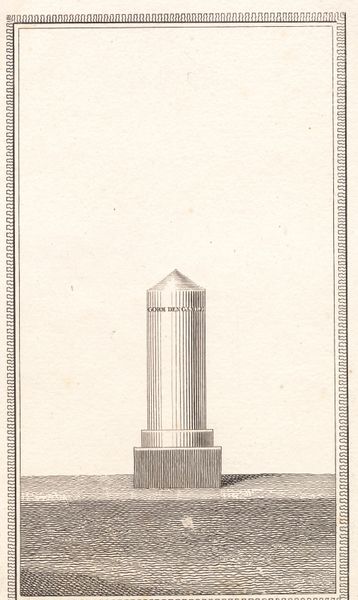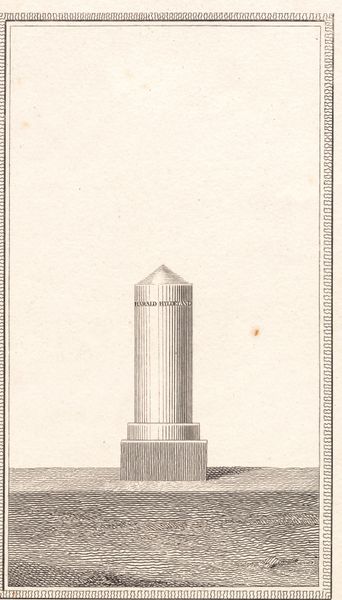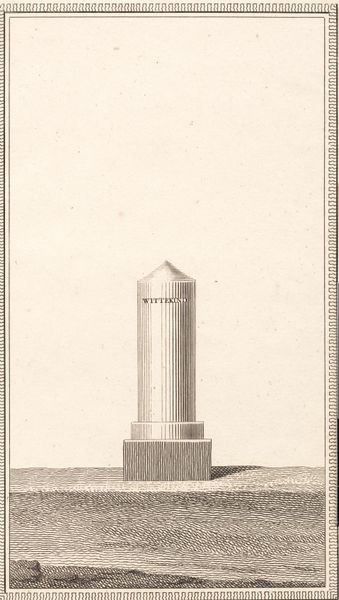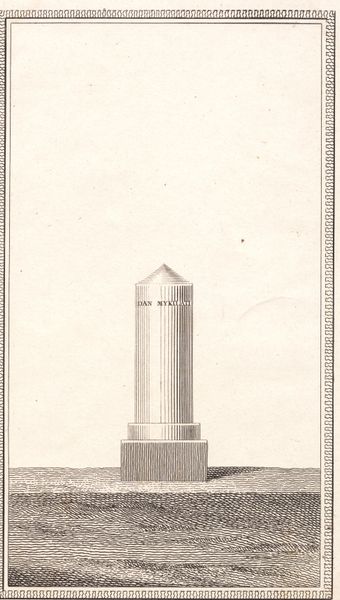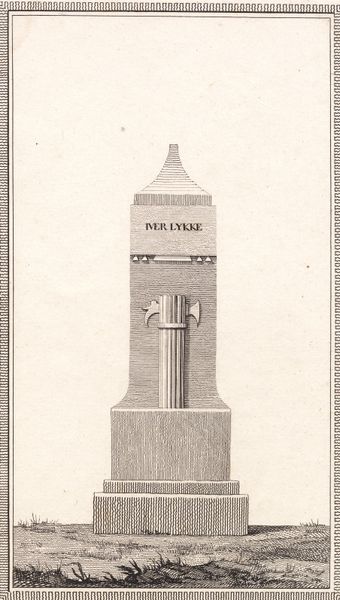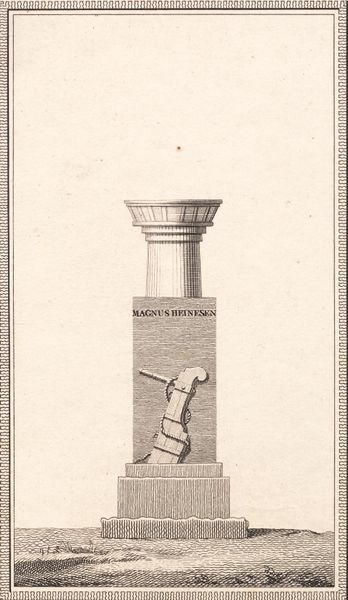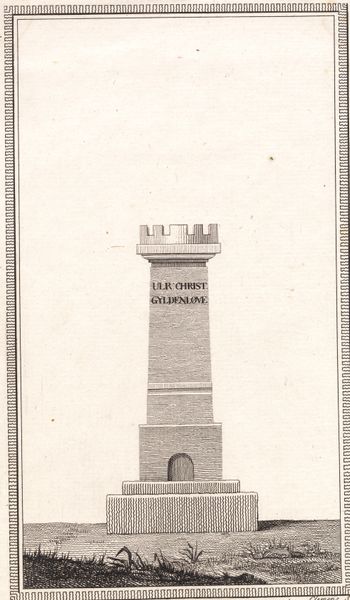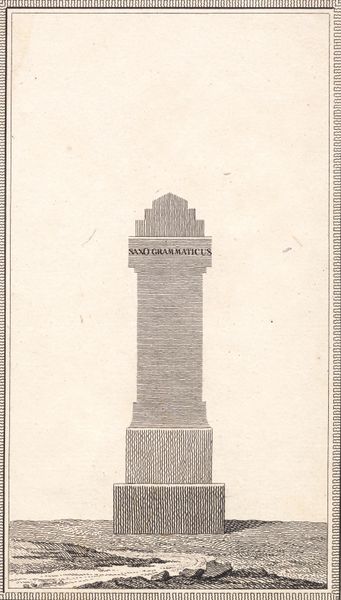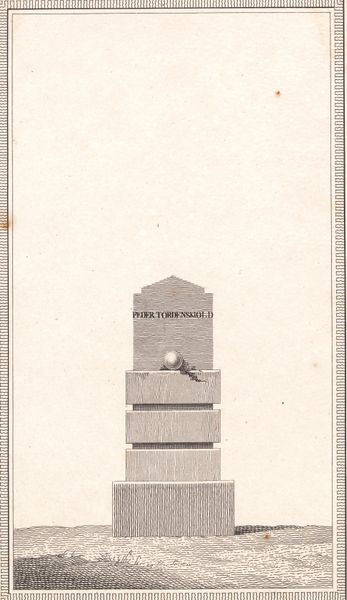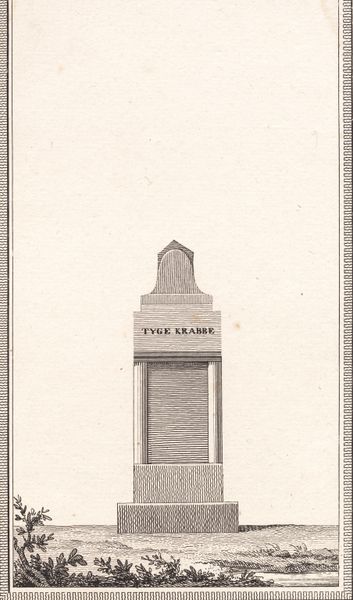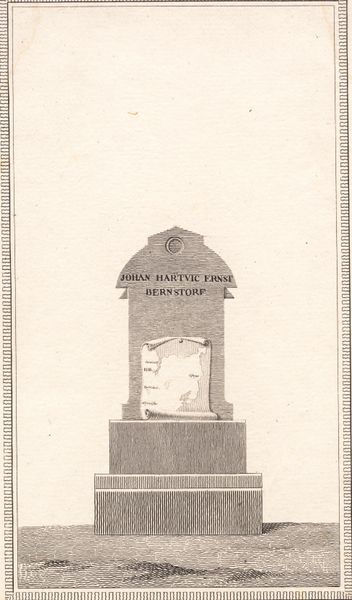
print, etching, engraving
#
neoclacissism
# print
#
etching
#
engraving
Dimensions: 180 mm (height) x 103 mm (width) (billedmaal)
Editor: This is "Skiold," a print by J.F. Clemens, dating from around 1779 to 1781. It’s made using etching and engraving techniques. It seems quite austere. What do you see in this piece? Curator: I see a potent example of how printed images helped circulate and solidify specific ideologies. Consider the material process: etching and engraving were labor-intensive methods. This piece elevates a single monument, likely imbued with nationalistic significance given the period and the very direct, unadorned titular reference, almost literally *written* into the print, emphasizing the importance of this "Skiold". It transforms a potentially controversial physical object into something reproducible and therefore more easily disseminated as propaganda. Editor: So, you’re saying the *act* of making a print like this, the labour and reproducibility, it's crucial to its meaning? Curator: Precisely. Think about the paper itself, its production, its availability. This isn’t a unique painting accessible only to the elite; it’s designed for wider distribution, shaping public perception by creating a more generalized and shared idea, a collective association between this memorial and some kind of unified past, that is necessarily ideological. It also elevates printmaking as a legitimate and therefore socially valuable art form. Who benefits from the circulation of such imagery? What socio-political stories are privileged through this form of representation, over others? Editor: It’s fascinating to think about the print itself as a tool, almost like a means of production in spreading the message. It really makes me reconsider the intent behind what seems, on the surface, to be just a simple image. Curator: Indeed, examining the material conditions and modes of production reveals layers of meaning often overlooked. It prompts us to question the power dynamics embedded within even the most seemingly straightforward image. Editor: I will definitely consider the socio-political environment and production processes when analyzing artworks from now on. Thank you!
Comments
No comments
Be the first to comment and join the conversation on the ultimate creative platform.
